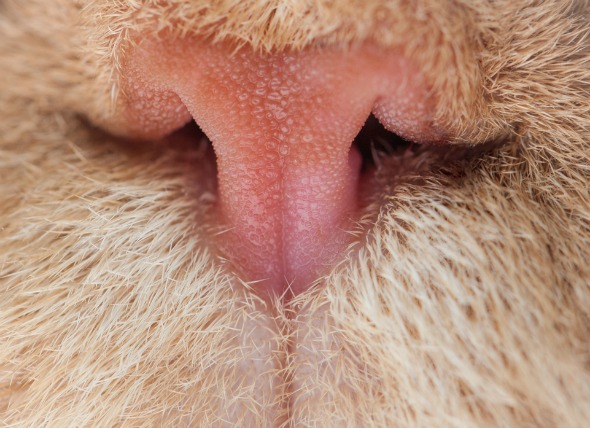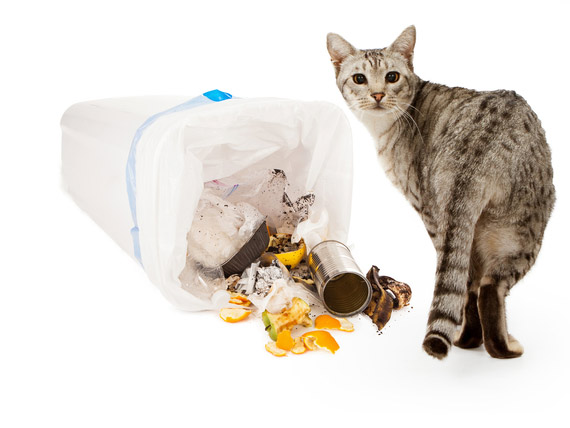

Squamous cell carcinoma is a malignant tumor of the squamous epithelial cells. In this case, it is a tumor of the nasal planum or the tissues in the nose pad. This tumor is more common in cats than dogs. Exposure to inhaled chemicals increases the risk of nasal tumors, including indoor use of coal, cigarettes, and air fresheners.
You will need to give your veterinarian a thorough medical history of your cat's health and onset of symptoms. Your veterinarian will perform a physical examination with full laboratory testing, including complete blood tests, biochemical profiles, and urinalysis. The results of these tests are usually normal in affected patients. While metastasis is rarely seen in the lungs, your veterinarian may take thoracic X-rays to evaluate for metastasis into the lungs. Other conditions your doctor will look for are dental diseases, rhinitis (bacterial and viral), aspergillosis, or cryptococcosis.
For an appropriate diagnosis to be made, your veterinarian will need to take tissue and fluid samples from the affected area. Your veterinarian will also take samples from the lymph nodes to detect whether metastasis is occurring. Magnetic resonance imaging (MRI) and computed tomography (CT) scans may provide more information about the extent of the tumor, as well as to help in surgical resection of the tumor.
There are various surgical modalities available and selection will be based on the location and extent of the problem. Surgery will be conducted to remove the affected tissue along with some margins of the normal tissue, to be certain that all of the affected tissue has been removed. If the tumor is invasive in nature, a deeper surgical resection will be required, followed by radiation therapy. Chemotherapy may also be advised in these patients, though it has not yet been satisfactorily evaluated for this type of cancer. Your veterinarian will consult a veterinary oncologist for the best treatment plan for your cat.
Overall prognosis is good if the tumor is small and superficial. If the tumor is invasive and metastatic in nature, the prognosis will not be positive. The decision to go forward with surgery or chemical therapy will be based on the actual prognosis. In some cases, end of life pain management may be in order. Good nutritional support is essential for these patients to ensure maintenance of body weight and condition.
Always seek advice and instructions from a veterinary oncologist before giving chemotherapy medications, as these drugs are highly toxic to human health. Pregnant women in particular should take extra care while administering chemotherapeutic drugs to their pets. Chemotherapy medications have the possibility of toxic side effects, so your veterinarian will need to closely monitor your cat's stability, changing dosage amounts as necessary.
After surgery, you should expect your cat to feel sore. Your veterinarian will give you pain medication for your cat to help minimize discomfort, and you will need to set up a place in the house where your cat can rest comfortably and quietly, away from other pets, active children, and busy entryways. Setting the cat litter box and food dishes close by will enable your cat to continue to care for itself normally, without exerting itself unduly. Use pain medications with caution and follow all directions carefully; one of the most preventable accidents with pets is overdose of medication.
If your cat is at increased risk for acquiring this disease, you may take preventive measures by limiting sun exposure, especially from 10:00 a.m. to 2:00 p.m. If your cat spends time in the sun on a window sill, or near a glass door, you might want to consider placing transparent sun shades on the glass, to limit the ultraviolet (UV) rays. Sunscreens have not been found to be effective for the prevention of this tumor.
 Destructive Behavior in Cats
It is normal for cats to scratch things. They do
Destructive Behavior in Cats
It is normal for cats to scratch things. They do
 Weight Loss and Chronic Disease in Cats
Cachexia in Cats
If your cat loses an excess of t
Weight Loss and Chronic Disease in Cats
Cachexia in Cats
If your cat loses an excess of t
 Toxoplasmosis in Cats
Toxoplasma gondii Infection in Cats
Toxoplasmosis
Toxoplasmosis in Cats
Toxoplasma gondii Infection in Cats
Toxoplasmosis
 Coral Snake Bite Poisoning in Cats
Coral Snake Venom Toxicosis in Cats
There are two
Coral Snake Bite Poisoning in Cats
Coral Snake Venom Toxicosis in Cats
There are two
 How Can I Repel Cats From an Area?
How Can I Repel Cats From an Area?
How
How Can I Repel Cats From an Area?
How Can I Repel Cats From an Area?
How
Copyright © 2005-2016 Pet Information All Rights Reserved
Contact us: www162date@outlook.com